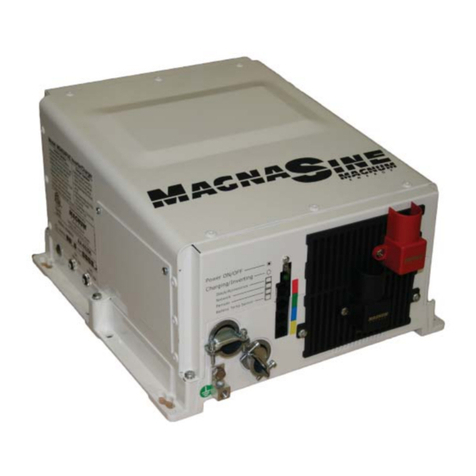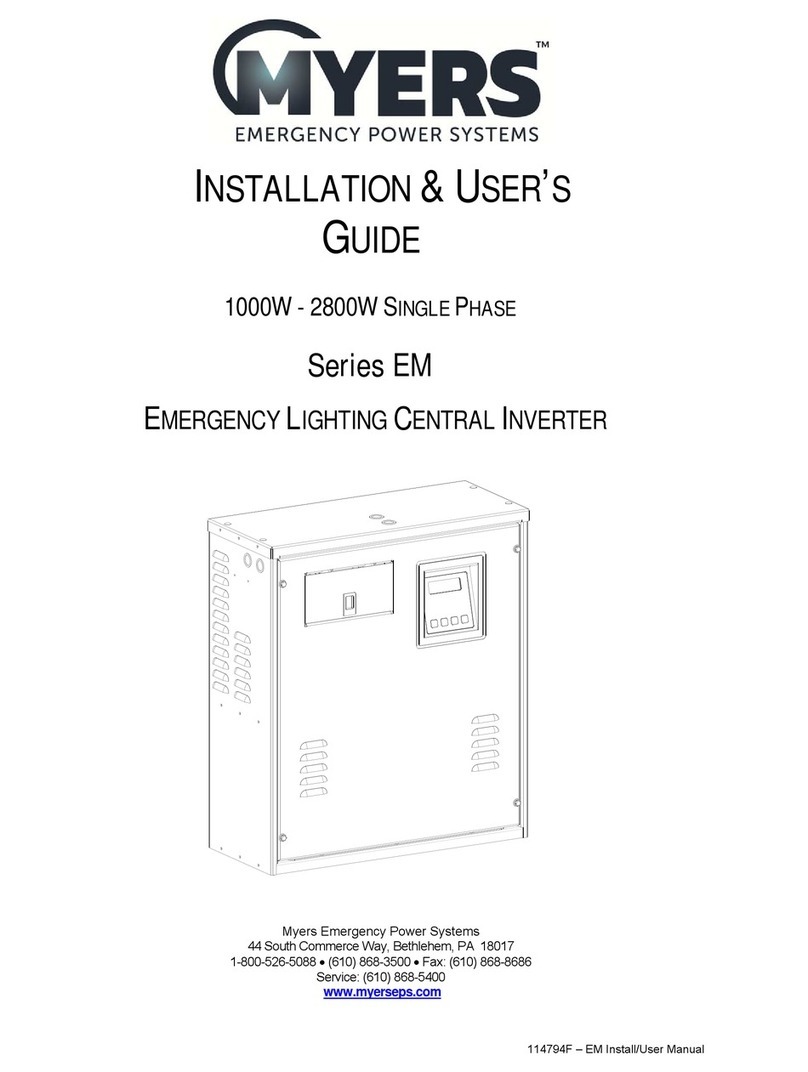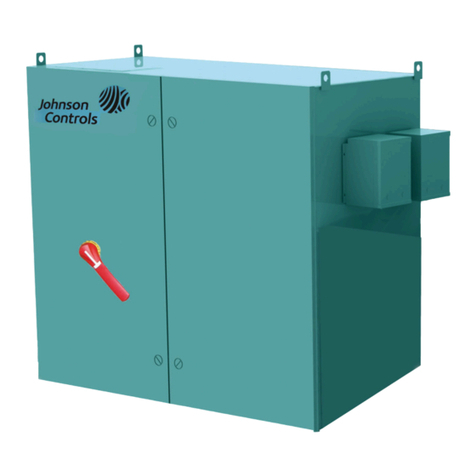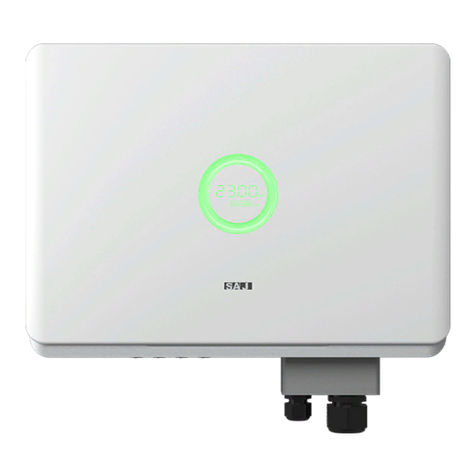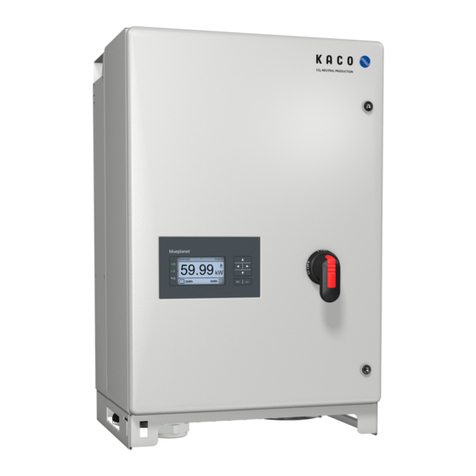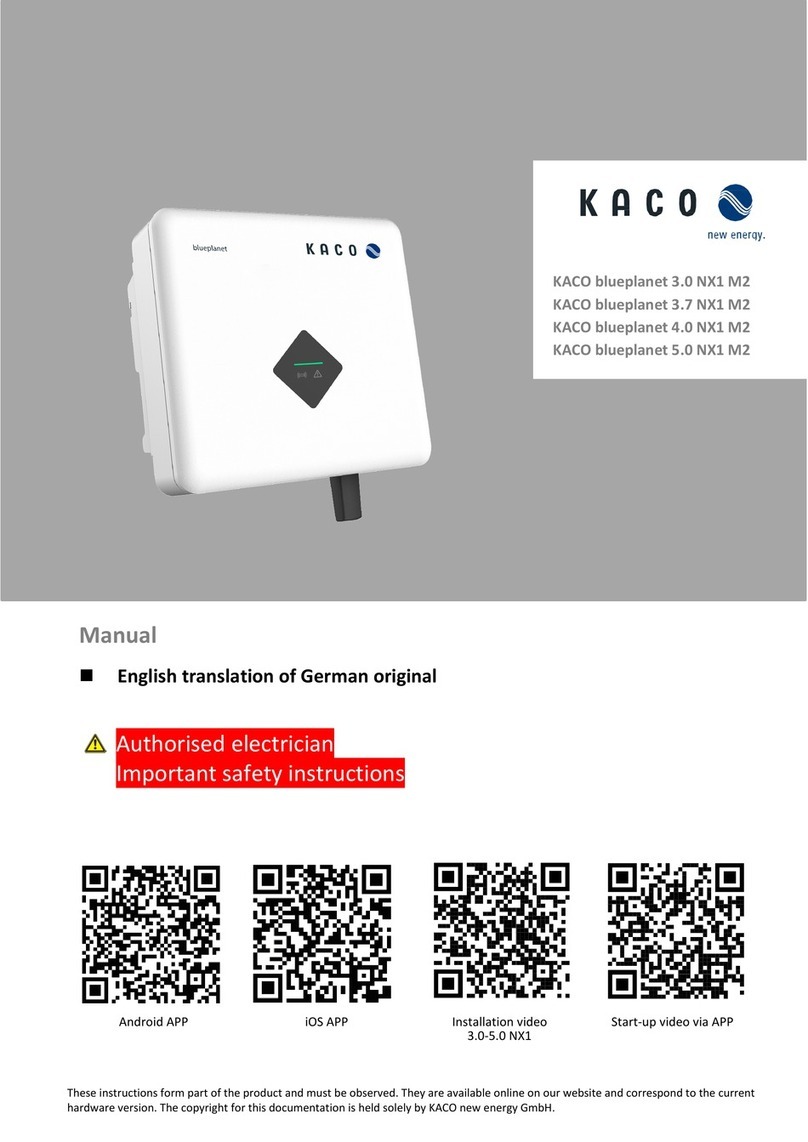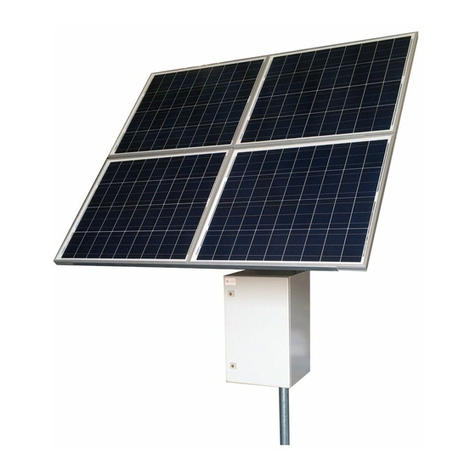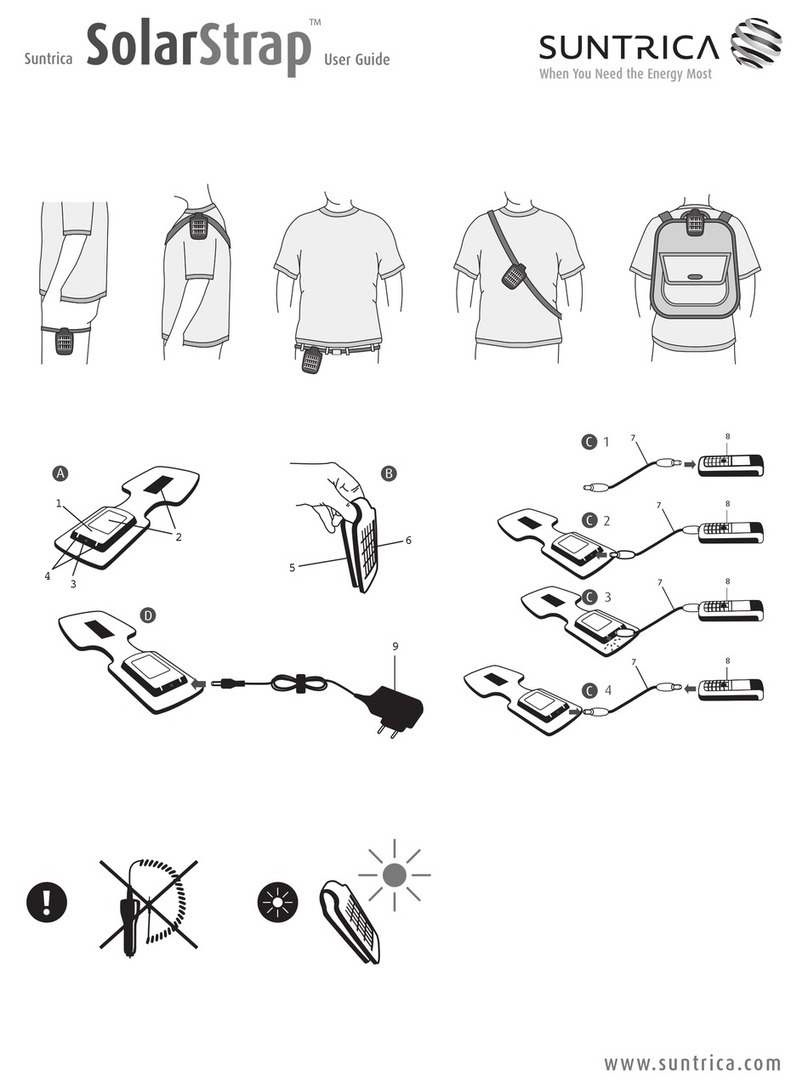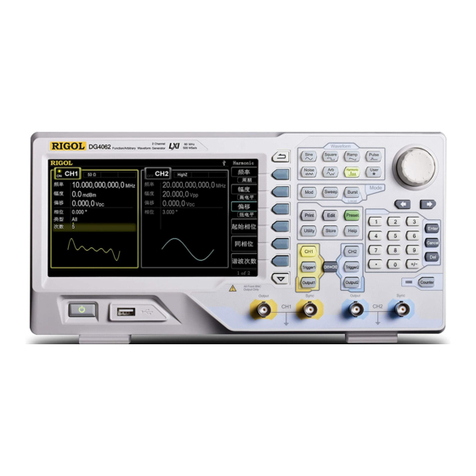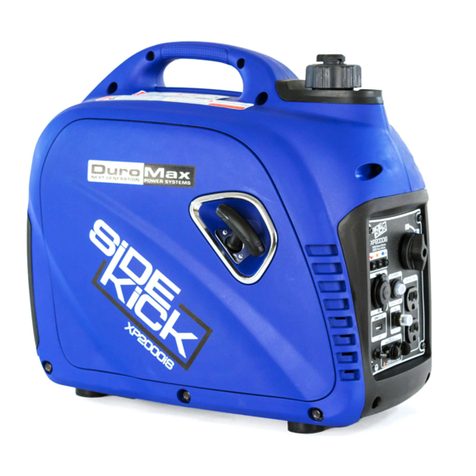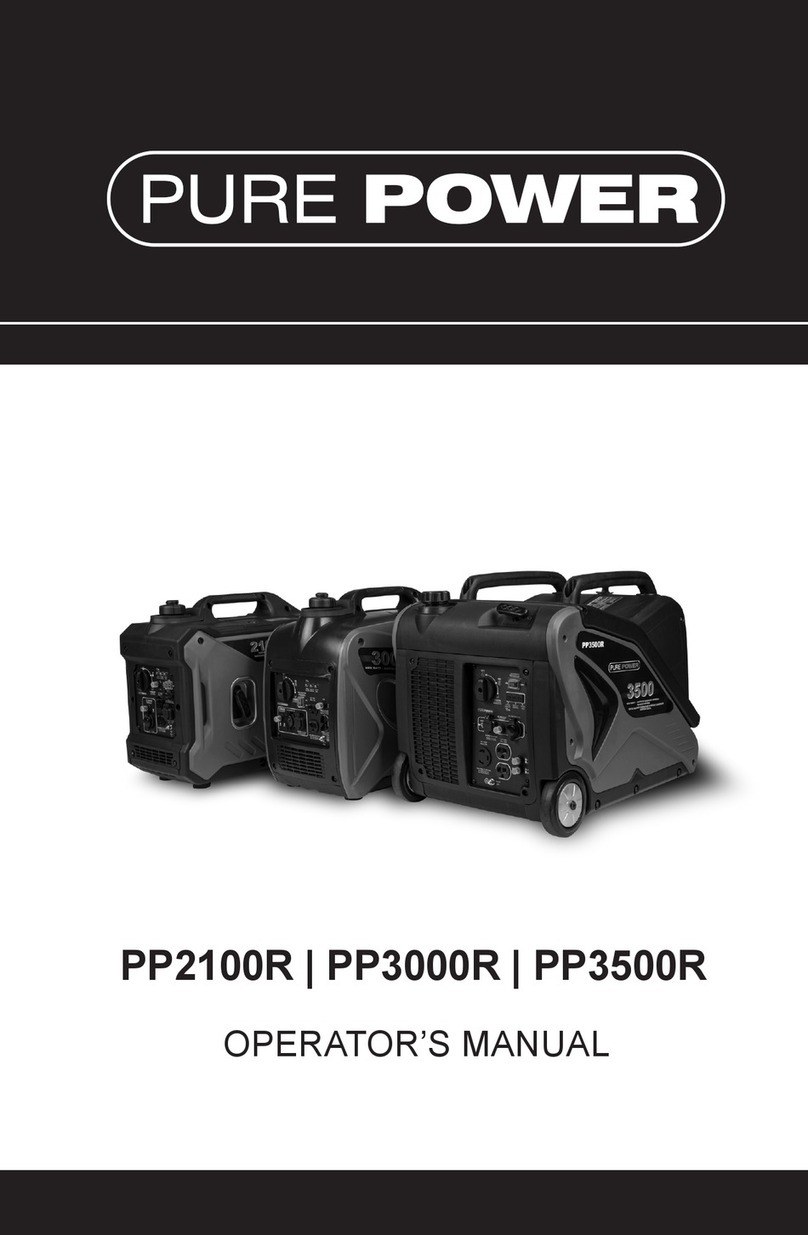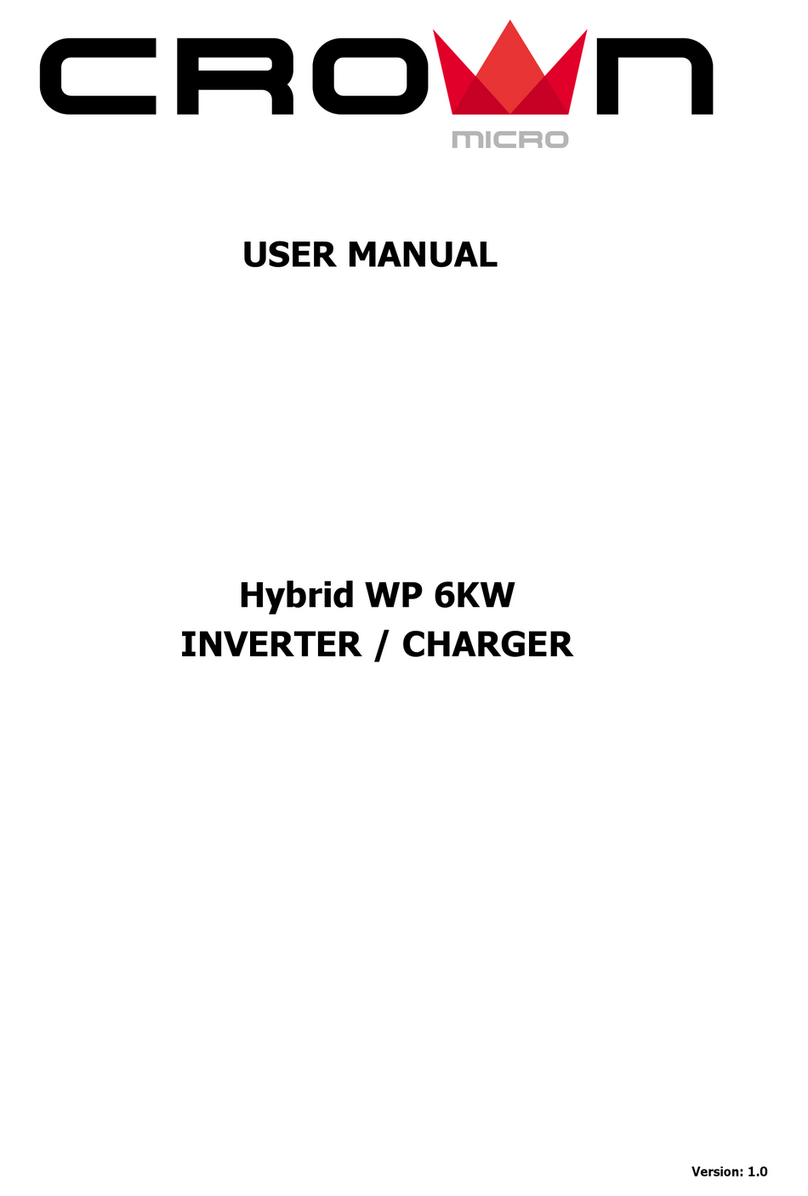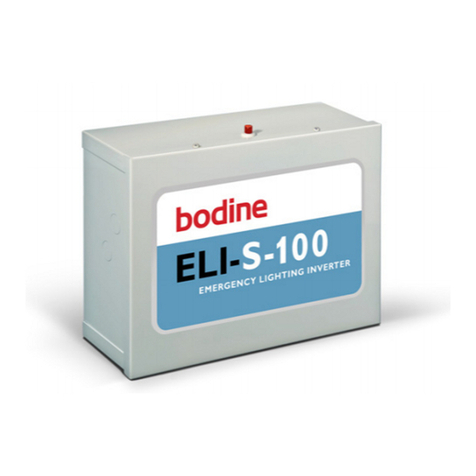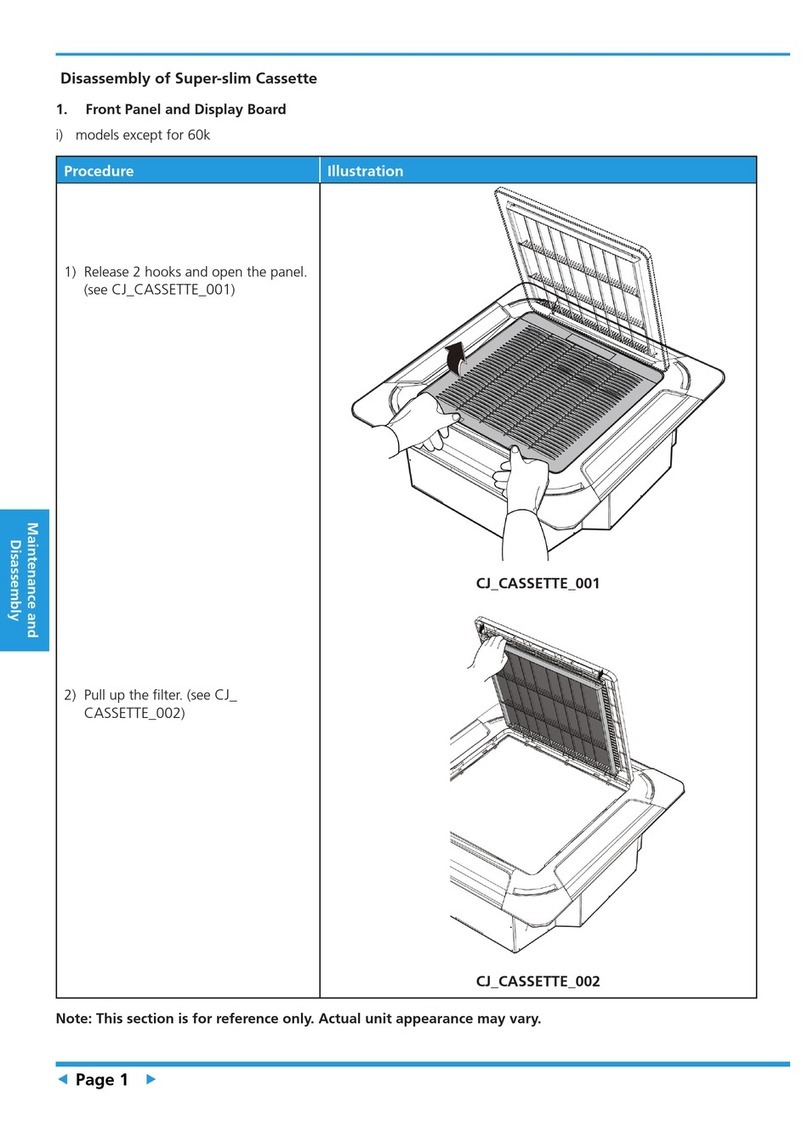GMTCNT GMD Series User manual

Kontrol Bağlantı uçları
GMD SERİSİ HIZ KONTROL CİHAZLARI
KOLAY BAŞLANGIÇ KLAVUZU
NOT : Bu kılavuz kolay devreye almak için basitleştirilerek hazırlanmıştır. Tüm
detaylar için ana kullanma kılavuzunu okuyunuz!
HATA KODLARI
Kod
Açıklama
Oc1
Oc2
Oc3
Anlık Aşırı Akım
Ou1
Ou2
Ou3
Yüksek Gerilim
lu Alçak Gerilim
lin Giriş Faz Kaybı
Op1 Çıkış Faz Kaybı
Oh1 Yüksek Sıcaklık
Oh4 Motor Koruma
dbh Frenleme Drenci Sıcaklık Yüksek
Ol1
Ol2 Motor Aşırı Yük
Olu Inverter Aşırı Yük
er1 Hafıza Hatası
er2 Tuş Takımı Haberleşme Hatası
er3 CPU Hata
er6 Operasyon Koruma
er7 Tune Hatası
er8 RS-485 Haberleşme Hatası
cof PID Geribesleme Kablo Hatası

TEMEL PARAMETRE AYARLARI
Kod Açıklama
F01
Frekans Kaynağı Seçimi
0: Tuş Takımındaki Ok Butonları
1: Gerilim Giriş Terminali [12] (0 - +10 VDC)
2: Akım Giriş Terminali [C1] (4 - 20 mA DC)
3: Akım ve Gerilim Giriş Terminalleri Toplamı [12] ve C1]
4: Dahili Potansiyometre (POT)
7: Terminal Girişleri YUKARI/AŞAĞI Kontrol
F02
0: RUN/STOP Butonları
1: Terminal Girişleri İLERİ veya GERİ
2: RUN/STOP Tuşları (İleri)
3: RUN/STOP Tuşları (Geri)
F03 Maksimum Frekans (Hz)
F04 Temel Frekans (Hz)
F07 Hızlanma Zamanı (sn)
F08 Yavaşlama Zamanı (sn)
F15 Frekans Üst Limiti (Hz)
F16 Frekans Alt Limiti (Hz)
F20 DC Fren Başlama Frekansı (Hz)
F21 DC Frenleme Oranı (%)
F22 DCFrenleme Zamanı (sn)
F42
Kontrol Modu Seçimi
0: V/F Kontrol (Kayma Kompanzasyon Aktif Değil)
1: Dinamik Tork Vektör Kontrol
2: V/F Kontrol (Kayma Kompanzasyonu Aktif)
11: V/F Kontrol (PMSM sürücü için) [ROM vers 0800
veya yüksek]
H03
Fabrika Ayarlarına Geri Dönme
1: Fabrika Ayarlarına Geri Döner (STOP tuşu ile yukarı
yön tuşuna aynı anda basılmalıdır)
H05
Fan Kontrol Parametresi
0: Pasif
1: Aktif
H11
Stop Methodu Seçimi
0: Yavaşlamalı Duruş
1: Serbest Duruş
MOTOR İŞLETİM PARAMETRELERİ
Kod Açıklama
P02
Motor Gücü
P03
Motor Akımı
P04
Auto-Tune
0: Aktif Değil
1: Motor Durur iken Auto-Tune
2: Motor V/F döner iken Auto -Tune
(Motor plaka değerleri girildikten sonra FUNC / DATA
tuşu ile kaydedilir ve RUN tuşuna basılır)
P06 Motor Yüksüz Akımı, Motor nominal akımının yarısı
girilmelidir.
HABERLEŞME PARAMETRELERİ
Kod Açıklama
H30
Frekans Komutu Run Komutu
0: F01/C30 F02
1: RS-485 F02
2: F01/C30 RS-485
3: RS-485 RS-485
Y01
Cihaz adres
Y04
Haberleşme Hızı
0: 2400 bps
1: 4800 bps
2: 9600 bps
3: 19200 bps
4: 38400 bps
Y05
Data Uzunluğu
0: 8 bits
1: 7 bits
Y06
Parity Check
0: None (2 stop biti Modbus RTU)
1: Even Parity (1 stop biti Modbus RTU)
2: Odd Parity (1 stop biti Modbus RTU)
3: None (1 stop biti Modbus RTU)
Y07
Stop Biti
0: 2 bits
1: 1 bit

GMTCNT
Compact Inverter
Instruction Manual
GMD Series
Three-phase 200 V series: GMD-00040 to 00150L
…
Three-phase 400 V series: GMD-00040 to 00150H
…
Single-phase 200 V series: GMD-00040 to 00220S
…
Thank you for purchasing our GMD series of inverters.
• This product is designed to drive a three-phase induction motor and three-phase permanent
magnet synchronous motor. Read through this instruction manual and be familiar with the
handling procedure for correct use.
• Improper handling might result in incorrect operation, a short life, or even a failure of this
product as well as the motor.
• Deliver this manual to the end user of this product. Keep this manual in a safe place until this
product is discarded.
• For instructions on how to use an optional device, refer to the instruction and installation
manuals for that optional device.
GMTCNT INR-SI47-1729a-E

2
Copyright ©2015 GMTCNT All rights
reserved.
No part of this publication may be reproduced or copied without prior written permission from
GMTCNT.
All products and company names mentioned in this manual are trademarks orregistered trademarks
of their respective holders.
The information contained herein is subject to change without prior notice for improvement.

i
Table of Contents
Preface .............................................................3
„
Safety precautions................................................4
Chapter 1 BEFORE USING THE INVERTER....1-1
1.1 Acceptance Inspection .............................. 1-1
1.2 External Views........................................... 1-2
Chapter 2 MOUNTING AND WIRING OF THE
INVERTER........................................2-1
2.1 Operating Environment ............................. 2-1
2.2 Installing the Inverter................................. 2-1
2.3 Wiring........................................................ 2-2
2.3.1 Removing and mounting the terminal
block covers...................................... 2-2
2.3.2 Terminal arrangement and screw
specifications .................................... 2-3
2.3.3 Recommended wire sizes................. 2-5
2.3.4 Wiring precautions............................2-7
2.3.5 Wiring for main circuit terminals and
grounding terminals ..........................2-8
2.3.6 Wiring for control circuit terminals... 2-11
2.3.7 Setting up the jumper switches.......2-18
Chapter 3 OPERATION USING THE KEYPAD . 3-1
3.1 Names and Functions of Keypad
Components.............................................. 3-1
3.2 Overview of Operation Modes...................3-2
Chapter 4 RUNNING THE MOTOR ...................4-1
4.1 Test Run.....................................................4-1
4.1.1 Checking prior to powering on...........4-1
4.1.2 Powering ON and checking...............4-1
4.1.3 Preparation before a test run
--Configuring function code data........4-2
4.1.4 Test run..............................................4-3
4.2 Operation...................................................4-3
Chapter 5 FUNCTION CODES............................5-1
5.1 Function Code Tables ................................5-1
Chapter 6 TROUBLESHOOTING ......................6-1
6.1If an Alarm Code Appears on the LED
Monitor......................................................6-1
6.2If anAbnormal Pattern Appears on the LED
Monitor while No Alarm Code is Displayed
....................................................6-3
Chapter 7 MAINTENANCE AND INSPECTION .7-1
7.1 Daily Inspection..........................................7-1
7.2 Periodic Inspection.....................................7-1
7.3 List of Periodical Replacement Parts.........7-3
7.4Inquiries about Product and Guarantee.....7-4
7.4.1 When making an inquiry....................7-4
7.4.2 Product warranty ...............................7-4
Chapter 8 SPECIFICATIONS.............................8-1
8.1 Standard Models........................................8-1
8.1.1 Three-phase 200 V class series........8-1
8.1.2 Three-phase 400 V class series........8-2
8.1.3 Single-phase 200 V class series .......8-3
8.2Terminal Specifications ..............................8-7
8.2.1 Terminal functions..............................8-7
8.2.2 Connection diagram in operation
by external signal inputs....................8-7
8.3Protective Functions ................................8-11


3
Preface
Thank you for purchasing our GMD series of inverters.
This product is designed to drive a three-phase induction motor and three-phase permanent magnet
synchronous motor (PMSM). Read through this instruction manual and be familiar with proper han-
dling and operation of this product.
Improper handling might result in incorrect operation, a short life, or even a failure of this product as
well as the motor.
Have this manual delivered to the enduser of this product. Keep this manual in a safe place until this
product is discarded.
The materials are subject to change without notice. Be sure to obtain the latest editions for use.
Guideline for Suppressing Harmonics in Home Electric and General-
purpose Appliances
Three-phase 200 V class series of inverters with a capacity of 15 kW or less, single-phase
200 V class series with 2.2 kW or less were once subject to the "Japanese Guideline for
Suppressing Harmonics in Home Electric and General-purpose Appliances" (established in
September 1994 and revised in October 1999), published by the Ministry of International Trade and
Industry (currently the Ministry of Economy, Trade and Industry (METI)).
Since the revision of the guideline in January 2004, however, these inverters have no longer been
subject to the guideline. The individual inverter manufacturers have voluntarily employed harmonics
suppression measures.
As our measure, it is recommended that DC reactors (DCRs) authorized in this manual be con-
nected to the GMD series of inverters.
When using DCRs not authorized in this manual, however, consult your GMTCNT representative
for the detailed specifications.

4
„
Safety precautions
Read this manual thoroughly before proceeding with installation, connections (wiring), operation, or
maintenance and inspection. Ensure you have sound knowledge of the device and familiarize
yourself with all safety information and precautions before proceeding to operate the inverter.
Safety precautions are classified into the following two categories in this manual.
Failure to heed the information indicated by this symbol may
lead to dangerous conditions, possibly resulting in death or
serious bodily injuries.
Failure to heed the information indicated by this symbol may
lead to dangerous conditions, possibly resulting in minor or
light bodily injuries and/or substantial property damage.
Failure to heed the information contained under the CAUTION title can also result in serious con-
sequences. These safety precautions are of utmost importance and must be observed at all times.
Application
• GMD is designed to drive a three-phase induction motor and three-phase permanent
magnet synchronous motor (PMSM). Do not use it for single-phase motors or for other
purposes.
Fire or an accident could occur.
• GMD may not be used for a life-support system or other purposes directly related to the
human safety.
• Though GMD is manufactured under strict quality control, install safety devices for
applications where serious accidents or material losses are foreseen in relation to the
failure of it.
An accident could occur.
Installation
• Install the inverter on a nonflammable material such as metal.
Otherwise fire could occur.
• Do not place flammable matter nearby.
Doing so could cause fire.

5
• Do not support the inverter by its terminal block cover during transportation.
Doing so could cause a drop of the inverter and injuries.
• Prevent lint, paper fibers, sawdust, dust, metallic chips, or other foreign materials from
getting into the inverter or from accumulating on the heat sink.
Otherwise, a fire or an accident might result.
• Do not install or operate an inverter that is damaged or lacking parts.
Doing so could cause fire, an accident or injuries.
• Do not get on a shipping box.
• Do not stack shipping boxes higher than the indicated information printed on those boxes.
Doing so could cause injuries.
Wiring
• When wiring the inverter to the power source, insert a recommended molded case circuit
breaker (MCCB) or residual-current-operated protective device (RCD)/earth leakage
circuit breaker (ELCB) (with overcurrent protection) in the path of power lines. Use the
devices within the recommended current range.
• Use wires in the specified size.
• When wiring the inverter to the power supply of 500 kVA or more, be sure to connect an
optional DC reactor (DCR).
Otherwise, fire could occur.
• Do not use one multicore cable in order to connect several inverters with motors.
• Do not connect a surge killer to the inverter's output (secondary) circuit.
Doing so could cause fire.
• Be sure to connect the grounding wires without fail.
Otherwise, electric shock or fire could occur.
• Qualified electricians should carry out wiring.
• Be sure to perform wiring after turning the power off.
• Ground the inverter in compliance with the national or local electric code.
Otherwise, electric shock could occur.
• Be sure to perform wiring after installing the inverter body.
Otherwise, electric shock or injuries could occur.
• Ensure that the number of input phases and the rated voltage of the product match the
number of phases and the voltage of the AC power supply to which the product is to be
connected.
Otherwise fire or an accident could occur.
• Do not connect the power source wires to output terminals (U, V, and W).
• Do not insert a braking resistor between terminals P (+) and N (-), P1 and N (-), P (+) and
P1, DB and N (-), or P1 and DB.
Doing so could cause fire or an accident.

6
• Generally, control signal wires are not reinforced insulation. If they accidentally touch any
of live parts in the main circuit, their insulation coat may break for any reasons. In such a
case, an extremely high voltage may be applied to the signal lines. Make a complete
remedy to protect the signal line from contacting any hot high voltage lines.
Doing so could cause an accident or electric shock.
• Wire the three-phase motor to terminals U, V, and W of the inverter, aligning phases each
other.
Otherwise injuries could occur.
• The inverter, motor and wiring generate electric noise. Take care of malfunction of the
nearby sensors and devices. To prevent the motor from malfunctioning, implement noise
control measures.
Otherwise an accident could occur.
Operation
• Be sure to install the terminal block cover before turning the power on. Do not remove the
cover while power is applied.
Otherwise electric shock could occur.
• Do not operate switches with wet hands.
Doing so could cause electric shock.
• If the retry function has been selected, the inverter may automatically restart and drive the
motor depending on the cause of tripping.
(Design the machinery or equipment so that human safety is ensured after restarting.)
• If the stall prevention function (current limiter), automatic deceleration, and overload
prevention control have been selected, the inverter may operate at an accelera-
tion/deceleration time or frequency different from the set ones. Design the machine so that
safety is ensured even in such cases.
Otherwise an accident could occur.
• The STOP key is only effective when function setting (Function code F02) has been es-
tablished to enable the STOP key. Prepare an emergency stop switch separately. If you
disable the STOP key priority function and enable operation by external commands, you
cannot emergency-stop the inverter using the STOP key on the built-in keypad.
• If an alarm reset is made with the operation signal turned on, a sudden start will occur.
Ensure that the operation signal is turned off in advance.
Otherwise an accident could occur.

7
• If you enable the "restart mode after momentary power failure" (Function code F14 = 4 or
5), then the inverter automatically restarts running the motor when the poweris recovered.
(Design the machinery or equipment so that human safety is ensured after restarting.)
• If you set the function codes wrongly or without completely understanding this instruction
manual and the User's Manual, the motor may rotate with a torque or at a speed not
permitted for the machine.
An accident or injuries could occur.
• Do not touch the inverter terminals while the power is applied to the inverter even if the
inverter stops.
Doing so could cause electric shock.
• Do not turn the main circuit power on or off in order to start or stop inverter operation.
Doing so could cause failure.
• Do not touch the heat sink or braking resistor because they become very hot.
Doing so could cause burns.
• Setting the inverter to high speeds is easy. Before changingthe frequency (speed) setting,
check the specifications of the motor and machinery.
• The brake function of the inverter does not provide mechanical holding means.
Injuries could occur.
Maintenance and inspection, and parts replacement
• Turn the power off and wait for at least five minutes before starting inspection. Further,
check that the LED monitor is unlit, and check the DC link bus voltage between the P (+)
and N (-) terminals to be lower than 25 VDC.
Otherwise, electric shock could occur.
• Maintenance, inspection, and parts replacement should be made only by qualified per-
sons.
• Take off the watch, rings and other metallic matter before starting work.
• Use insulated tools.
Otherwise, electric shock or injuries could occur.

8
Disposal
• Handle the inverter as an industrial waste when disposing of it.
Otherwise injuries could occur.
Others
• Never attempt to modify the inverter.
Doing so could cause electric shock or injuries.
GENERAL PRECAUTIONS
Drawings in this manual may be illustrated without covers or safety shields for explanation of
detail parts. Restore the covers and shields in the original state and observe the description in
the manual before starting operation.

1-1
Chapter 1 BEFORE USING THE INVERTER
1.1 Acceptance Inspection
Unpack the package and check that:
(1) An inverter and instruction manual (this manual) are contained in the package.
(2) The inverter has not been damaged during transportation—there should be no dents or parts
missing.
(3) The inverter is the model you ordered. You can check the model name and specifications on the
main nameplate. (Main and sub nameplates are attached to the inverter and are located as
shown on the next page.)
TYPE GMD- 00150H
SOURCE 3HP 380- 440V 50Hz/ 60Hz 5.9A
OUTPUT 3HP 1.5kW 380- 480V 1- 400Hz
3kVA 3.7A 150% 1min
SER.No. IP Code IP20 / SCCR 100kVA / MASS 1.7kg 1505
A55FE5220003AA Assembled in Korea ADT
TYPE GMD- 00150H
SER.No. A55FE5220003AA
(a) Main Nameplate (b) Sub Nameplate
Figure 1.1
Nameplates
TYPE: Type of inverter
SOURCE: Number of input phases (three-phase: 3PH, single-phase: 1PH), input voltage, input
frequency, input current
OUTPUT: Number of output phases, rated output capacity, rated output voltage, output
frequency range, rated output current, and overload capacity
SER. No.: Product number Manufacturing date
A55 FE 5220003AA 15 05
Production month
Production year: Last digit of year

1-2
1.2 External Views
(1) External views
Control circuit
terminal block cover
Sub nameplate
Keypad
Main circuit
terminal block
cover
Main nameplate
Control circuit terminal bock cover
Main nameplate
Figure 1.2 External Views of GMD
(2) Wiring section
Barrier for the RS-485
communications port*
Control signal cable
port
DB, P1, P (+) and N (-) wire port
L1/R, L2/S, L3/T, U, V, W,
grounding wire port
L1/R, L2/S, L3/T, P1, P (+), N (-)
wire port
DB, U, V, W,
grounding wire port
Cooling
fan
(a) GMD-00075L(b) GMD-00150L
(* When connecting the RS-485 communications cable, remove the control circuit terminal block cover and
cut off the barrier provided in it using nippers.)
Figure 1.3 Wiring
Section

2-1
Item
Specifications
Site location
Indoors
Ambient
temperature
-10 to +50°C (IP20) (Note 1)
Relative
humidity
5 to 95% (No condensation)
Atmosphere
The inverter must not be exposed to dust,
direct sunlight, corrosive gases, flammable
gas, oil mist, vapor or water drops. (Note 2)
The atmosphere can contain only a low level
of salt.
(0.01 mg/cm2 or less per year)
The inverter must not besubjected to sudden
changes in temperature that will cause
condensation to form.
Altitude
1,000 m max. (Note 3)
Atmospheric
pressure
86 to 106 kPa
Vibration
3 mm (Max. amplitude) 2 to less than 9 Hz
9.8 m/s2 9 to less than 20 Hz
2 m/s2 20 to less than 55 Hz
1 m/s2 55 to less than 200 Hz
Chapter 2 MOUNTING AND WIRING OF THE INVERTER
2.1 Operating Environment
Install the inverter in an environment that satisfies the requirements listed in Table 2.1.
Table 2.1 Environmental Requirements Table 2.2 Output Current Derating Factor in
Relation to Altitude
Altitude
Output current
derating factor
1000 m or lower
1.00
1000 to 1500 m
0.97
1500 to 2000 m
0.95
2000 to 2500 m
0.91
2500 to 3000 m
0.88
(Note 1) When inverters are mounted
side-by-side without any gap between them,
the ambient temperature should be within
the range from -10 to +40°C.
(Note 2) Do not install the inverter in an
environment where it may be exposed to
cotton waste or moist dust or dirt which will
clog the heat sink in the inverter. If the
inverter is to be used in such an environ-
ment, install it in the panel of your system or
other dustproof containers.
(Note 3) If you use the inverter in an altitude
above 1000 m, you should apply an output
current derating factor as listed in Table 2.2.
2.2 Installing the Inverter
(1) Mounting base
The temperature of the heat sink may rise up to
approx. 90°C during operation of the inverter, so
the inverter should be mounted on a base made of
material that can withstand temperatures of this
level.
Top 100 mm
Left Right
Install the inverter on a base made of metal or
other non-flammable material.
A fire may result with other material.
10
mm
10
mm
(2) Clearances
Ensure that the minimum clearances indicated in
Figure 2.1 are maintained at all times. When
installing the inverter in the panel of your system,
take extra care with ventilation inside the panel as
the temperature around the inverter tends to
increase.
Bottom 100 mm
Figure 2.1 Mounting Direction and
Required
Clearances
INVERTER

2-2
When mounting two or more inverters
When mounting two or more inverters in the same unit or panel, basically lay them out side by side.
As long as the ambient temperature is 40°C or lower, inverters can be mounted side by side without
any clearance between them. When mounting the inverters necessarily, one above the other, be
sure to separate them with a partition plate or the like so that any heat radiating from an inverter will
not affect the one(s) above.
(3) Mounting direction
Secure the inverter to the mounting base with four screws or bolts (M4) so that the GMD logo faces
outwards. Tighten those screws or bolts perpendicular to the mounting base.
Do not mount the inverter upside down or horizontally. Doing so will reduce the heat
dissipation efficiency of the inverter and cause the overheat protection function to operate,
so the inverter will not run.
Prevent lint, paper fibers, sawdust, dust, metallic chips, or other foreign materials from getting
into the inverter or from accumulating on the heat sink.
This may result in a fire or accident.
2.3 Wiring
Follow the procedure below. (In the following description, the inverter has already been installed.)
2.3.1 Removing and mounting the terminal block covers
(1) Loosen the screw securing the control circuit terminal block cover.
(2) Insert your finger in the cutout (near "PULL") in the bottom of the control circuit terminal block
cover, then pull the cover towards you.
(3) Hold both sides of the main circuit terminal block cover between thumb and forefinger and slide
it towards you.
(4) After performing wiring, mount the main circuit terminal block cover and control circuit terminal
block cover in the reverse order of removal.
Control circuit terminal
block cover screw
Control circuit terminal
block cover Main circuit terminal block cover
Figure 2.2 Removing the Terminal Block Covers

2-3
2.3.2 Terminal arrangement and screw specifications
The figures below show the arrangement of the main and control circuit terminals which differs
according to inverter type. The two terminals prepared for grounding, which are indicated by the
symbol G in Figures A to D, make no distinction between the power supply side (primary circuit)
and the motor side (secondary circuit).
(1) Arrangement of the main circuit terminals
Table 2.3 Main Circuit
Terminals
Power
supply
voltage
Nominal
ap-
plied
motor
(kW)
Inverter type
Terminal
screw size
Tightening
torque
(N·m)
Refer to:
Three-
phase
200 V
0.4
GMD-00040L
M3.5
1.2
FigureA
0.75
GMD-00075L
1.5
GMD-00150L
M4
1.8
Figure B
2.2
GMD-00220L
3.7
GMD-00370L
Three-
phase
400 V
0.4
GMD-00040H
0.75
GMD-00075H
1.5
GMD-00150H
2.2
GMD-00220H
3.7
GMD-00370H
Single-
phase
200 V
0.4
GMD-00040S
M3.5
1.2
Figure C
0.75
GMD-00075S
1.5
GMD-00150S
M4
1.8
Figure D
2.2
GMD-00220S

2-4
Table 2.3 Main Circuit
Terminals(continued)
Power
supply
voltage
Nominal
ap-
plied
motor
(kW)
Inverter type
Terminal
screw size
Tightening
torque
(N·m)
Refer to:
Three-
phase
200 V
5.5
GMD-00550L
M5
3.0
FigureE
7.5
GMD-00750L
11
GMD-01100L
M6
M4
5.8
1.8
FigureF
Figure B
15
GMD-01500L
Three-
phase
400 V
5.5
GMD-00550H
M5
3.0
FigureE
7.5
GMD-00750H
11
GMD-01100H
M6
M4
5.8
1.8
FigureF
Figure B
15
GMD-01500H
Figure E Figure
F

2-5
11
12
13
11
CM
FWD
REV
CM
(2) Arrangement of the control circuit terminals (common to all GMD models)
Y1
Y1E
FMA
C1
PLC
X1
X2
X3
30A 30B 30C
Screw size: M 2 Tightening torque: 0.2 N•m
Screw size: M 2.5 Tightening torque: 0.4 N•m
Table 2.4 Control Circuit
Terminals
Terminal
symbol
Screwdriver
(Shape of
tip,
B x
A)
Thickness of tip: B
Allowable wire size
Bared wire
length
Ferrule
terminal*
Opening dimension
in
the terminal
block
[30A], [30B],
[30C]
Flat screwdriver
(0.6 x 3.5 mm)
AWG22 to AWG18
(0.34 to 0.75 mm2)
6 to 7 mm
2.8 (W) x 1.7 (H) mm
Other than
the above
Flat screwdriver
(0.5 x 2.4 mm)
AWG24 to AWG18
(0.25 to 0.75 mm2)
5 to 6 mm
1.7 (W) x 1.7 (H) mm
Table 2.5 Recommended Ferrule
Terminals
Screw size
Wire
size
Type
(216- )
With insulated collar
Without insulated collar
Short type
Long type
Short type
Long type
M2
AWG24 (0.25 mm2 )
321
301
151
131
M2 or M2.5
AWG22 (0.34 mm2 )
322
302
152
132
AWG20 (0.50 mm2 )
221
201
121
101
AWG18 (0.75 mm2 )
222
202
122
102
The length of bared wires to be inserted into ferrule terminals is 5.0 mm or 8.0 mm for the short or long type,
respectively.
The following crimping tool is recommended:Variocrimp 4 (Part No. 206-204).
2.3.3 Recommended wire sizes
Table 2.6 lists the recommended wire sizes. The recommended wire sizes for the main circuit
terminals for an ambient temperature of 50°C are indicated for two types of wire: HIV single wire (for
the maximum allowable temperature 75°C) (before a slash (/)) and IV single wire (for 60°C) (after a
slash (/)),

This manual suits for next models
14
Table of contents
